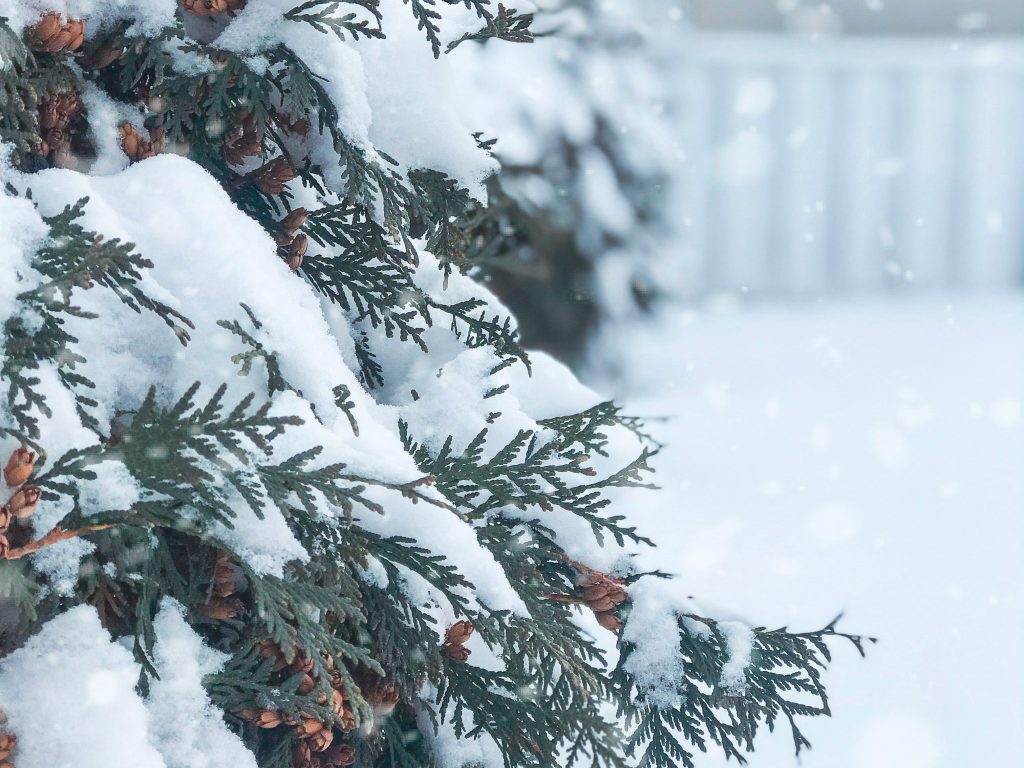Creating Winter Interest in the Garden

This past week I’ve spent a lot of time looking out my window and thinking one to two things. Either I can’t wait for spring, or I’m amazed at how beautiful my yard looks. I know some of you might not think this endless snow is in any way beautiful, but I love the way shadows from trees create little streaks of purple throughout the glistening whiteness. The snow dusts my spruce tree and arborvitae. The dried flowers on my hydrangeas wear little white caps of snow, which make them bounce and sway in the winter wind. My favorite part is my red twig dogwood. The bright branches just pop out against the snow!
Most often we think of our yards and gardens in spring or summer, but a winter garden can be quite pretty in its own way, especially if we think about winter when we select trees, shrubs and perennial flowers for our yards. Plants that provide structure, texture and color create winter interest. Tree and shrub branches provide the structure. They give us a place for our eyes to rest, something to look at that breaks up a field of snow. Evergreens and tree bark provide some color, along with any berries and fruits that remain on crabapple trees and chokeberry bushes. But color plays a supporting role in winter. Texture is the star. Texture can be created by interesting bark on trees and shrubs, like river birch or hackberry trees. Perennials come into play here too. Many of us cut our perennial flowers back in fall, but leaving all or some of the flowers and seed pods creates a little structure and a lot of texture. Think about milkweed pods, hydrangeas, black eyed susans, coneflowers and tall ornamental grasses.
Creating a landscape with winter interest also provides food and shelter for birds. I love to hear them sing. It always makes me think of spring. Speaking of spring, stop by the greenhouse when we open. We will help you select some plants you will enjoy next winter, and the other seasons too.
